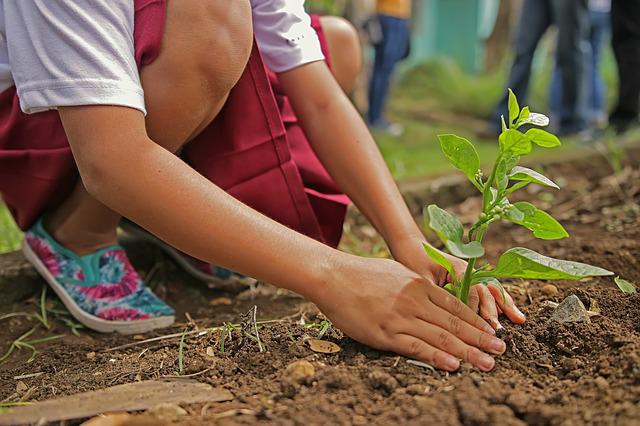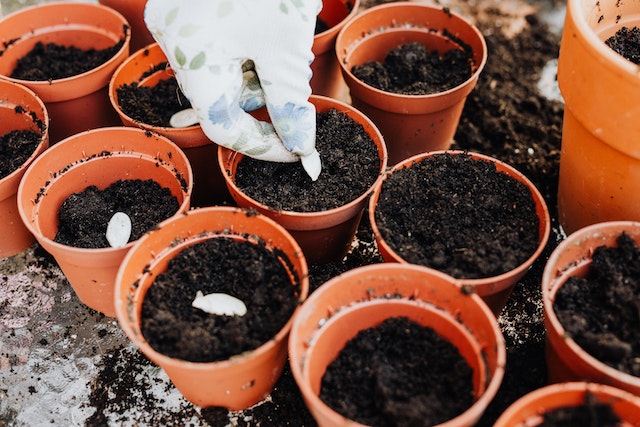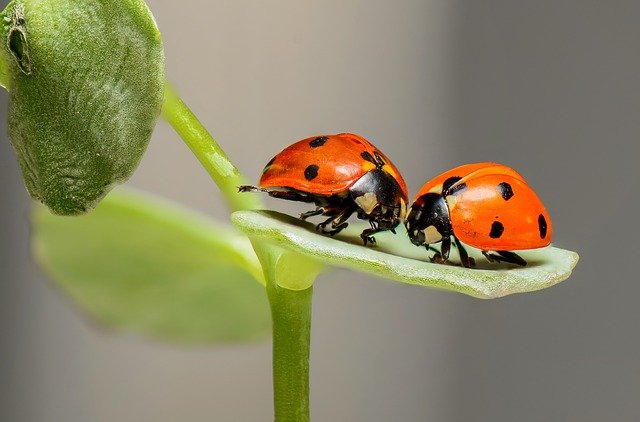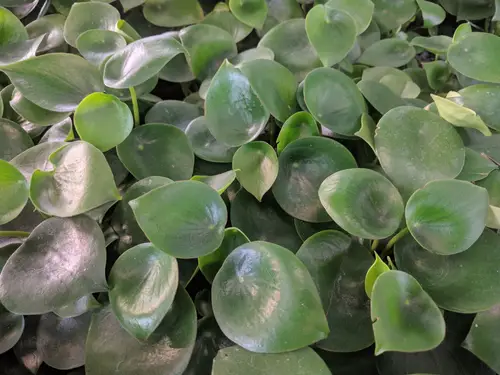The peperomia owl eye is an easy-to-care-for plant that can thrive both indoors and outdoors. The plant grows much better indoors than outdoors when provided with an amount of light and water. The plant can also thrive in different seasons and climates and it requires low maintenance to thrive.
The appearance of a plant may be different from another of it, and this is solely dependent on the condition it was groomed or grown in. If you want to have this plant in your home, it is only proper to find out all you can about it before making the purchase.
Origin and Classification
Peperomia owl eye is native to the tropical regions of South America and originated from parts of Colombia and Peru. Its scientific name is Peperomia Polybotrya, where Peperomia is Greek for ‘resembling paper’ and Polybotrya means ‘many’. The owl eye peperomia belongs to the Piperaceae family of the pepper family.
The plant doesn’t grow over one foot, and only grows to a height of about 8 to 12 inches, making it an ideal plant for indoor grooming.
Features of Peperomia Owl Eye

Peperomia owl eye has succulent and fleshy leaves that are supported with stems that are quite sturdy. Since it doesn’t grow taller than one foot, the plant can be potted on in a container, and be grown in a compact space.
Peperomia Polybotrya prefers cool and humid conditions with temperatures of 65 to 80 degrees Fahrenheit. The owl eye peperomia is also called coin-leaf peperomia, a coin plant, and in some cases, it is inaccurately referred to as Chinese money plant (Pilea Peperomioides). This is because they both have similar leaves.
Flowers and Leaves
The leaves of the peperomia owl eye are heart-shaped, fleshy, and succulent due to the water they store which helps them thrive during the drought or dryer periods. The leaves are also thick, dark green with a glossy sheen that makes it shiny, and has a pale green color underneath.
The flowers of the owl eye peperomia on the other hand are quite an interesting feature. It could look like a mouse’s tail to some people, while to others, it looks like a bushy spike.
Some species of peperomia are known to have notable flower spikes, while peperomia owl eye consists of individual flowers that have a sweet smell. The flowers blossom and die in a few weeks and they grow on the stems.
Tolerance and Resistance
The plant is an ideal indoor plant and doesn’t require direct sunlight as that could dry the leaves or possibly burn them. A seat by the window facing either the east or west is enough, i.e. the plant can have enough sunlight in the morning or later afternoons.
It can also grow under tree canopies and is capable of stretching towards available light sources if it isn’t getting enough.
Height and Growth
As mentioned earlier, the peperomia owl eye grows between 8 to 12 inches in height, and it will grow indoors, and towards the light source, if placed in a poorly lit position. It will also grow in a humid and cool environment.
Maintenance and Durability
The peperomia owl eye is a low maintenance plant. To maintain it, one would need to mist it, keep the leaves clean and dust-free. Lastly, the flower rots once it is done blooming and fading. It is advisable to remove them once they are completely faded to avoid red spider mite infestation.
Basic Care of Peperomia Owl Eye

The Peperomia owl eye does not require direct sunlight or its leaves may dry or burn. The plant should also be placed indoor in a cool and humid area of 65 to 85 degrees Fahrenheit. The plant would require interval watering during the dry season, else the leaves dry out.
The plant requires extra care if it must be repotted, unlike when pruned. The pruning process of the owl eye peperomia does not require one to be gentle.
Light and Watering
The Peperomia owl eye will grow just fine with indirect sunlight and it will grow or stretch towards available light source if not placed properly. It also does not require all-day sunlight, the amount and hours of sunlight the plant gets when placed in the east or west-facing windows is enough.
The watering of the plant can be tricky. Overwatering can kill it, so will underwatering. Using your finger, if the soil is moist at 1 or 2 inches deep the owl eye peperomia doesn’t require watering.
Soil and Repotting

The Peperomia owl eye does not require repotting as it is a compact plant. But in case you do need to repot it because you bought it as a seedling in a small pot, then you’d need to be very gentle with it. The roots are not deep and also fragile. Do not repot unless it is very necessary.
Temperature and Humidity
The Peperomia owl eye will experience dry leaves and the leaves may burn in temperatures higher than 85 degrees Fahrenheit. If the average temperature of your clime is above 85 degrees, it is best to house the plant indoors. Also, it prefers a humid environment.
Fertilizing, Pruning, and Propagation
The Peperomia owl eye requires a liquid fertilizer that can be applied once a month except during winter. Pruning can be done to keep the form of the plant. Unhealthy leaves and foliage can be pruned, also if it is stretching towards the light, you can prune it. Lastly, it can be propagated using the stem cutting and leaf-cutting propagation methods.
Common Problems Caring For Peperomia Owl Eye
The Peperomia owl eye experiences both overwatering and underwatering. Overwatering can rot the rot, cutting off access to water to the stem and leaves. Although the plant can survive for a longer period in the drought, due to stored water in the leaves and stem, the leaves begin to wilt, wrinkle, and are later crispy. One has to be careful to not both overwater and underwater the Peperomia Polybotrya.
Bugs

Mealybugs and red spider mites infest the Peperomia owl eye plant. They feed on the plant’s sap from the leaves causing a yellow spot on the affected leaves, which later fall, haven’t lost all their moisture. Spray the leaves with Neem oil, and occasionally wipe down the leaves with a moist cloth.
Rotting Stalk
A rotting stalk of an owl eye peperomia is a sign of overwatering and the root has rotted at this point. The damage is reversible.
Waterlogged Soil
Repotting of the Peperomia owl eye may be required to avoid the root from rotting due to overwatering in this case. The damage here is still reversible. Ensure you carry out the repotting task carefully, the root is delicate.
Yellow or Wilting Leaves
The yellowing and wilting of the owl eye peperomia leaves is caused by overwatering. The wilting of the leaves can also be caused by underwatering. In this instance, the damage is still reversible and the plant can be saved.
Another post on plant types: Alocasia Odora Variegated
Final Thoughts on Peperomia Owl Eye
The Peperomia Polybotrya is a great indoor plant that requires indirect light and low maintenance. It can fit into a compact space or window sill while you groom and water it. It does not require watering in the winter, and survives a long time in drought or summer.
Frequently Asked Questions
How do you take care of an owl eye plant?
The owl eye plant can be cared for by growing it indoors at a temperature of 65 to 85 degrees Fahrenheit, a cool and humid environment, under a few hours of indirect sunlight from east or west-facing window or balcony in the morning or later in the evening.
Use the finger to water the plant. Deep your finger 2 inches into the soil, if it is dry, you water. Another method is if your finger can easily push apart the soil, do not water.
Remove faded flowers, keep the leaves clean and dust-free, and reduce red spider mites and mealybugs infestation with Neem oil. Prune the plant; remove dead, or yellow leaves and foliage’s. It requires the application of liquid fertilizer all season except winter. It also doesn’t require watering during winter.
Does Peperomia need sunlight?
No! It does not require direct sunlight as the leaves can dry up and eventually burn if exposed to it. If the plant must be placed outside, it would require the protection of a larger tree or a shade. The plant will grow fine anywhere with a light source.
Is Peperomia a good indoor plant?
Yes! Peperomia Polybotrya is a great indoor plant. It does not grow over 12 inches high, so it will not need repotting and will not take up a lot of space. It smells nice, flowers and leaves do not litter by falling off easily. If a light source is not available LEDs can be used as a light source.
It can survive drought, thus you can go on a summer vacation without worrying about losing your plant. The maintenance is also low. Liquid fertilizer simply needs to be applied once a month.
Why is My peperomia owl eye Drooping?
There might be several reasons why your peperomia plant is drooping. The good news is that you can remedy the problem fast. Some primary reasons your peperomia owl eye is drooping include exposure to stress and improper care.
Underwatering and overwatering this plant will cause the leaves to fold and develop root rot, respectively. This will make your owl’s eye leaves droop. Also, it will droop if you don’t expose your plant to sufficient light.

Hey, I’m Lisa and I’ve been an avid gardener for over 30 years. I love writing, talking and living in the garden! Feel free to connect with me on my socials below

